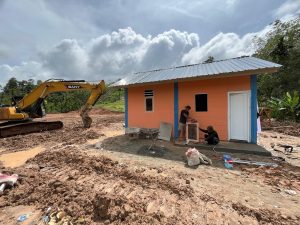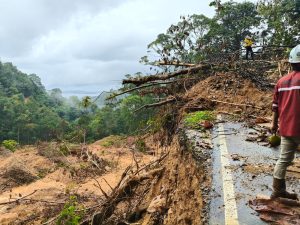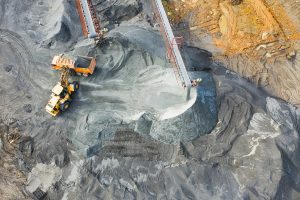Jakarta – Despite abundant new and renewable energy (NRE) sources potential, Indonesia’s utilisation is still very minimal, at about 0.3 percent. Head of the Sub-Directorate of Engineering and the Environment for Various NRE, Ministry of Energy and Mineral Resources (ESDM), Martha Relitha Sibarani said, Sunday (26/6), Indonesia has five new energy sources and six renewable energy sources.
“These seven new renewable energy sources include geothermal, water, bioenergy, solar, wind, current and ocean waves. But only 0.3 percent of its potential has been developed,” she said in a webinar.
Meanwhile, in the plenary meeting of the House of Representatives (DPR) two weeks ago (14/6), a Draft Law (RUU) on New and Renewable Energy (NRE) was approved as a bill proposed by the DPR RI. The decision was made by the Deputy Speaker of the Indonesian House of Representatives, Lodewijk Paulus.
It is planned that the NRE Bill will be ratified before the peak of the G20 Summit in Bali in November. After being brought to a plenary meeting, Commission VII of the DPR will immediately submit a draft of the EBT Bill to President Joko Widodo.
In the draft of the EBT Bill, new energy sources written in article 9 include nuclear energy sources, hydrogen, coal methane gas, liquefied coal, and gaseous coal. Meanwhile, renewable energy sources include geothermal energy sources, wind, biomass, sunlight, water flows and waterfalls, garbage, agricultural and plantation product waste, livestock waste or manure, as well as movements and differences in sea layer temperature. According to Article 36 of the EBT Bill, renewable energy is used for power generation, industrial activities, and transportation.
Low utilisation of NRE
Sibarani said that according to data as of December 2021, Indonesia stores 3,686 Giga Watts (GW) of renewable energy potential, or around 3,686,000 Megawatts (MW). Meanwhile, the utilisation is only around 11,585 MW.
She gave an example of the potential for solar energy stored by Indonesia as an equatorial country to store the potential of 3,295 GW of solar energy that comes directly from the sun’s heat. Unfortunately, it is still very minimally utilised, 217 MW.
In addition to sunlight, the archipelago is also blessed with a large source of wind or wind energy. The potential to become an energy source is 155 GW, but only 154 MW has been utilised.
“The wind potential is mainly found in NTT, South Kalimantan, West Java, South Sulawesi, Aceh and Papua,” added Sibarani.
NRE incentive support is only one percent
For four years or from 2016 to 2020, the government’s support for NRE is only one percent of the total incentives provided for the energy sector reaching IDR 225 trillion. Of that amount, the largest support was disbursed for fossil fuel incentives, reaching IDR 1,153 trillion.
“So the total incentives to support the fossil fuel energy sector reach 94 percent,” said Lourdes Sanchez, Senior Policy Advisor and Lead of The International Institute for Sustainable Development (IISD), in a Webinar entitled Indonesia’s Energy Support Measures: Shifting Support From Fossil Fuels to Clean Energy. , Wednesday (22/6).
According to Sanchez, the fossil fuel incentives are channelled to 38.8 percent of oil and gas, 18 percent of coal and 37.3 percent of electricity. Incentives for fossil fuels rose 30 percent to IDR 246 trillion. In detail, the incentives for fossil fuel-based electricity are IDR 112 trillion, the oil and gas sector IDR 74 trillion, and coal IDR 61 trillion.
The incentives given to support fossil fuels are the largest compared to the costs disbursed for other energy sources. The incentives for other energy sources, such as biofuels, are only 5% or IDR 61 trillion, and the electric battery industry is estimated at only IDR 19 billion.
“This estimate is not entirely accurate, as a large number of support measures cannot be measured due to data limitations,” Sanchez added.
Responding to the data, Sanchez reminded the Indonesian government to immediately shift incentives from fossil fuels to clean energy. If not, then don’t expect the net zero emission target by 2060 to be achieved. Because disproportionate support for fossil fuels is tantamount to draining public budgets, hindering the clean energy transition, and accelerating climate change. (Hartatik)
Banner photo: Anton Klyuchnikov/pexels.com














